The Dark History behind Radio Communication
The story of Howard Armstrong, David Sarnoff and the Radio Corporation of America, and how the superheterodyne receiver architecture works.
Hey, I’m Vikram 👋 and thanks for reading!
I’d really appreciate if you reply to this email to let me know your feedback about this newsletter; it will help me improve the content quality.📝
You can also reach me on LinkedIn/X or join the community on the Substack chat.
If you like these articles, please let others know. Word of mouth helps grow this newsletter! 🙏
The convenience of global connectivity we often take for granted today, came at the cost of a life; a tale of revenge, lies and torn friendships.
In this article, you will learn:
The tale of the superheterodyne with Armstrong, Sarnoff and the RCA.
Basic working principles of a superheterodyne system.
Let’s dive in!
A Quick Story
For the last 100 years, the superheterodyne receiver has been one of the greatest inventions in the history of radio communication.
Superheterodyne architecture was the brainchild of Edwin Howard Armstrong, one of the most brilliant engineers of our time. While he was a student at Columbia, he discovered that an amplifier's gain can be enhanced by positive feedback. A term he called "regeneration." With sufficient feedback, he could design an RF oscillator, which was the first source of RF energy from a vacuum tube.
To do this, he used a vacuum tube invented by a scientist named Lee DeForest, a self-proclaimed “father of radio”, whose love for science was only trumped by his love for money. As soon as DeForest learned of Armstrong's regeneration circuit, he took him to court, claiming that he had discovered it two years prior. Litigations are common, but this one continued for the next 20 years, reaching the supreme court. Just one of many Armstrong would fight in his life.
Armstrong used the concept of regeneration to build a receiver. The single vacuum tube acted both as a detector and as an amplifier. He used inductive coils to generate feedback and immediately saw the difficulty implementing it like this. He had to precisely adjust the coils orientation to provide just the right feedback at a given frequency, to get the receiver to work.
Interestingly another scientist named Reginald Fessenden conceived of the term heterodyning. He viewed it as a beat frequency that you observe in audio whose frequency is the difference of the two underlying frequencies.
Armstrong put this idea to good use. Instead of trying to convert the modulated signal to audio frequencies, he converted it to an intermediate frequency range of about 10 kHz. At these frequencies, vacuum tubes had enough gain that they did not need regeneration and its associated tuning headaches.
The superheterodyne receiver was born. His seminal 1924 paper on this explains everything that we identify as important today as radio engineers - oscillator stability and pulling, interstage interactions, need for filtering and impact of noise. It was way beyond its time to say the least.
Armstrong sold his superheterodyne patent to communications giant Radio Corporation of America (RCA), led by David Sarnoff. It is hard to argue that he was not adequately compensated for his patents because Armstrong received $735,000 cash and 60,000 shares of RCA stock, making him RCA’s biggest stockholder. This was an incredible amount of money in the 1920s.
With Armstrong’s engineering skills and Sarnoff’s business acumen, RCA became the largest communications company at the time. The two even became good friends. Sarnoff eventually became one of the most prominent figures in the media industry even founding the National Broadcasting Company (NBC).
With the advent of FM radio, however, history takes a dark turn. Up until that time, it was all AM radio and it had one major problem. Any electrical interference in the atmosphere caused static in the received signal, and Sarnoff wanted a way to eliminate it from the AM radio system.
Armstrong discovered that using frequency modulation, or FM, eliminated the problem. Unfortunately, this was not the solution Sarnoff wanted. He wanted the AM radio fixed in order to protect his investments into the technology. This resulted in a growing rift between Sarnoff and Armstrong, and eventually Armstrong left to found his own FM radio company.
Realizing that FM radio was the only path to static-free radio, Sarnoff realized his mistake and wanted to buy exclusive rights to FM radio from Armstrong’s company for a million dollars. Armstrong flat out refused and told him to get lost.
Angered by this, Sarnoff used his influence to ensure that the Federal Communications Commission (FCC) changed the FM radio spectrum so that Armstrong’s company could no longer use it, rendering the company useless. Sarnoff and RCA started using FM technology without any license or permission, and soon Armstrong sued.
Armstrong went up against a corporation with near infinite resources and powerful people. RCA ensured that they prolonged the lawsuit as long as possible. Eventually Armstrong ran out of money and took out loans to pay his lawyers. He begged Sarnoff to settle, but Sarnoff refused.
Armstrong revealed the state of his finances to his wife Marion, who was coincidentally Sarnoff’s secretary. They got into a huge fight and Armstrong hit her with a fireplace poker. Fearful of him, she fled the house.
Broken and defeated in every sense, in 1954, Armstrong stepped out of the window of his New York Apartment. His body was found on a patio a few hours later by a custodian.
Sarnoff wept openly at his once close friend’s funeral, knowing the part played in his life and eventual death.
Marion Armstrong eventually won all his lawsuits against RCA. She won 10 million dollars over the next 11 years.
Armstrong's invention makes modern communication possible, but humanity got it at a great price. Check out the references below if you want a walk down history lane.
With that appreciation, we can start looking at the system itself.
Superheterodyne Architecture
Fig 1 shows a simplistic block diagram of a superheterodyne transceiver.
Communication standards define that radios should transmit and receive in narrow frequency bandwidths of several MHz, while the radio signal is in the GHz range. Take a look at the 5G-new radio (NR) frequency bands, and you’ll notice quickly that the operating frequency is as high as 6.7 GHz, while the channel bandwidth is as low as 5 MHz.
If the antenna in the system above is receiving a signal at 6.7 GHz, it is virtually impossible to design a filter that can select a 5 MHz channel from it, while sufficiently rejecting neighboring channels. No filter technology exists with that selectivity.
Instead, a band select filter is used to select all the channels around a given center frequency. The filter bandwidth can be hundreds of MHz wide, as long as it rejects frequencies that are not in the required range. The superheterodyne system will extract the correct channel later on, as we will see.
If we are dealing with a time-domain duplex (TDD) system, which means only the receiver or transmitter is operating and never both at the same time, then an RF switch follows the band select filter to switch to either the transmit or receive path.
In GSM systems, although it is a frequency-domain duplex (FDD) system, where the transmit and receive frequencies are different, the transmit and receive time slots are staggered, effectively making it a TDD system.
In CDMA technology, transmit and receive paths operate simultaneously. In this case, the RF switch is replaced with a duplexer that rejects the transmit signal while allowing the receive signal. In practice, all duplexers have limited rejection and the transmit signal can leak through to the receive side resulting in TX-RX feedthrough. Due to this, CDMA receivers need to be exceptionally linear to be insensitive to the transmitter operating at the same time.
Next we have the amplifiers. On the receive side, the function of the low-noise amplifier (LNA) is to amplify the receive signal while adding minimal noise on its own. This boosts the signal level, relative to the noise received by the antenna. The LNA should also operate with minimal loss to not lose any signal and be linear enough to not introduce any distortion.
On the transmit side, the function of the power amplifier (PA) is to boost the signal to be transmitted. The PA should produce significant output power, while consuming minimum energy to do so (at least for mobile communication). It should also meet certain linearity requirements to not distort the transmitted signal. There are some incredibly sophisticated design methods to linearize PAs, and is an entire research area on its own.
After the amplification process, the signal is filtered again to remove the “image” frequency that can corrupt the signal being received. In a later article, we will examine where this image frequency comes from and why it needs to be removed. For now, suffice to say that it is important to be able to uniquely extract the information from a communication channel.
The signal is then fed into a mixer circuit in which a frequency-tunable local oscillator (LO) is mixed with the desired radio signal. The LO frequency is chosen to be close to the RF frequency. The output of the mixer is a number of “sum” and “difference” frequencies between the RF and LO signal. We are only interested in the difference frequencies (in the MHz range) which is then filtered with the channel select filter, and everything else is rejected.
Now we have a lower frequency MHz-range signal called the Intermediate Frequency or IF. This is the essence of the superheterodyne receiver. Because we were able to convert the GHz into the MHz range, it is much simpler to filter out the correct channel from the signal.
Additionally, designing good amplifiers in the IF frequency range is simpler. After subsequent amplification by the IF amplifier, the signal is converted to/from the digital domain and handed off to the digital signal processor which handles all the signal modulation/demodulation tasks.
That, in a nutshell, is how the superheterodyne receiver works.
In a future post, we will delve into the importance of each component, its design considerations, tradeoffs and overall system design.
⭐️ Key Takeaways
The superheterodyne architecture has made radio communication ubiquitous today and it has a dark history behind it, filled with legal battles and suicides.
Converting a radio frequency signal received by an antenna to an intermediate frequency is the key idea that enabled wireless technology because clean amplification is much easier at lower frequency.
The superheterodyne system has a sequence of amplification and filtering steps that are uniquely designed to extract the desired signal.
📚 References
Armstrong and the Superheterodyne - A look at history.
Kathy Loves Physics and History is a great YouTube channel that covers this story in the following videos:
Scott Wooley, “The Network: The Battle for the Airwaves and the Birth of the Communications Age.” (affiliate link)
YouTube channel “Technology Connections” has this nice video about the superheterodyne radio. Lots of explanations with juicy vacuum tubes.
The views, thoughts, and opinions expressed in this newsletter are solely mine; they do not reflect the views or positions of my employer or any entities I am affiliated with. The content provided is for informational purposes only and does not constitute professional or investment advice.

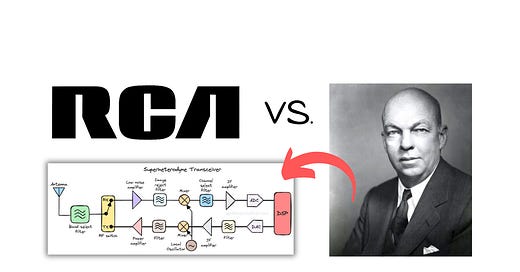


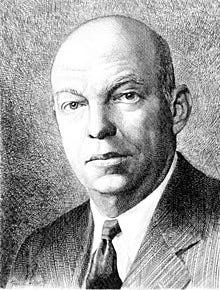
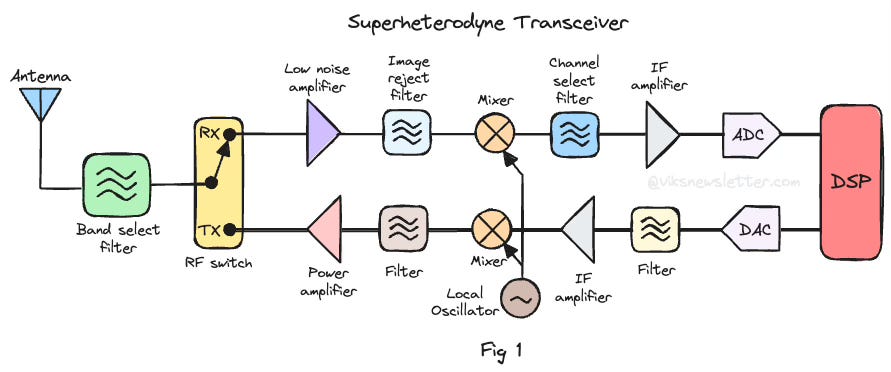

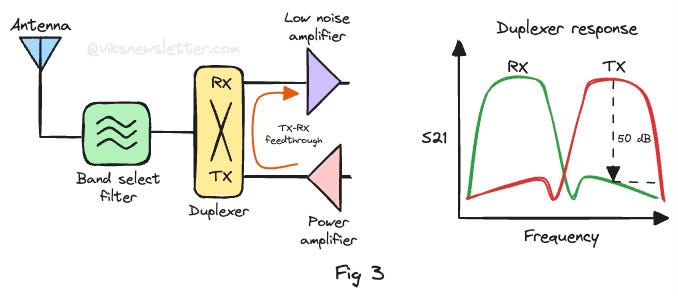
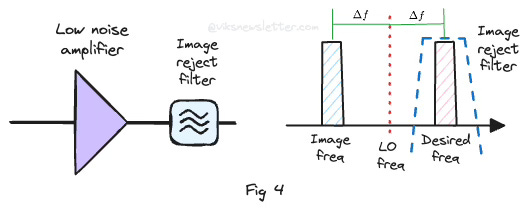

Your posts are very insightful !
Thank you Vikram, this is very good introduction into the topic.